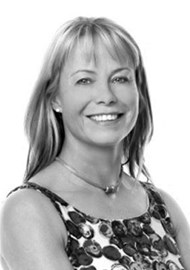This was undoubtedly the biggest and most prestigious UK conference of the year. The international mix of both delegates and presenters brought together knowledge, skill and allowed us to experience a jam-packed agenda covering all aspects of aesthetic medicine. The hugely impersonal QE2 building is not my favourite venue since it provided many opportunities to get lost throughout the weekend, but I cannot imagine the conference coping in a smaller building. Planning my route around the maze of exhibitors, lectures and demonstrations was one of the biggest challenges but the helpful staff and numerous signs minimised this trauma.
The pre-conference advanced masterclass was one of the main highlights of the four-day extravaganza. The world’s leading practitioners shared their invaluable ‘tips and tricks’ on how to safely and effectively achieve the best aesthetic results. The focus was on holistically understanding the whole face, while explaining the practical and clinical elements of each treatment strategy. The exciting live stream link to a conference in Singapore (Clinical Facial Aesthetics Singapore) illustrated just how far technology has come. The amusement as Dr Christopher Rowland Payne, taken aback to be so rudely interrupted by his own voiceover from the demonstration video during his presentation, reminded us that beneath our professional exterior, we are all still human.
The three-day FACE agenda provided educational opportunities in injectables, skin, body options, business matters, aestheticians and threads; six simultaneous programmes were run on these topics. As if this wasn’t enough, the main sponsors – the pharmaceutical giants of the industry – also provided their own educational forums with seminars and demonstrations showcasing their wares.
Amidst all the choices it was not easy to decide what presentations to attend. There were some new and innovative treatments to learn about. These included Dr Sherif Wakil describing the use of platelet-rich plasma (PRP) in sexual regeneration (the ‘O’ shot and the ‘P’ shot), a variety of presentations from leading experts on using stem cells, growth factors and dendritic cells in aesthetics and new treatment approaches to treat stretch marks and hair loss. The concept of ‘personalised medicine’ and the importance of an anti-ageing approach were highlighted by Professor Syed Haq who explained the potential value of bio-identical hormones and questioned the science behind IV vitamin infusion.
It is always refreshing to hear the opinions of colleagues, who are not afraid to question claims and promises from suppliers. Reminding us to keep our brains engaged as we are spoon-fed a feast of fact and fiction is essential if we are to survive in an increasingly competitive industry where medical professionalism can be compromised by greed. When a drug is classified as a medical device it is important to understand the implications and the need for caution.
No event is complete without the opportunity to network and gossip with colleagues. The drinks reception was delightfully informal with surprisingly good wine and canapés . . . and many ‘after conference’ parties ensured that delegates were entertained late into the night.
Despite all these new technologies and advances in aesthetic medicine, the overriding theme from many of the leading medical practitioners was to not lose sight of our duty to care. The patient-centred approach was highlighted as being a fundamental requirement in all consultations and treatments. It is confusing enough for practitioners to select the treatment options that could provide the best results so we should readily appreciate the bewildering and overwhelming choices facing our patients. Putting patients before profit must continue to be the underlying principle that we, as medical professionals, respect as a basic standard of aesthetic medicine.
Visit www.faceconference.com for further information.




